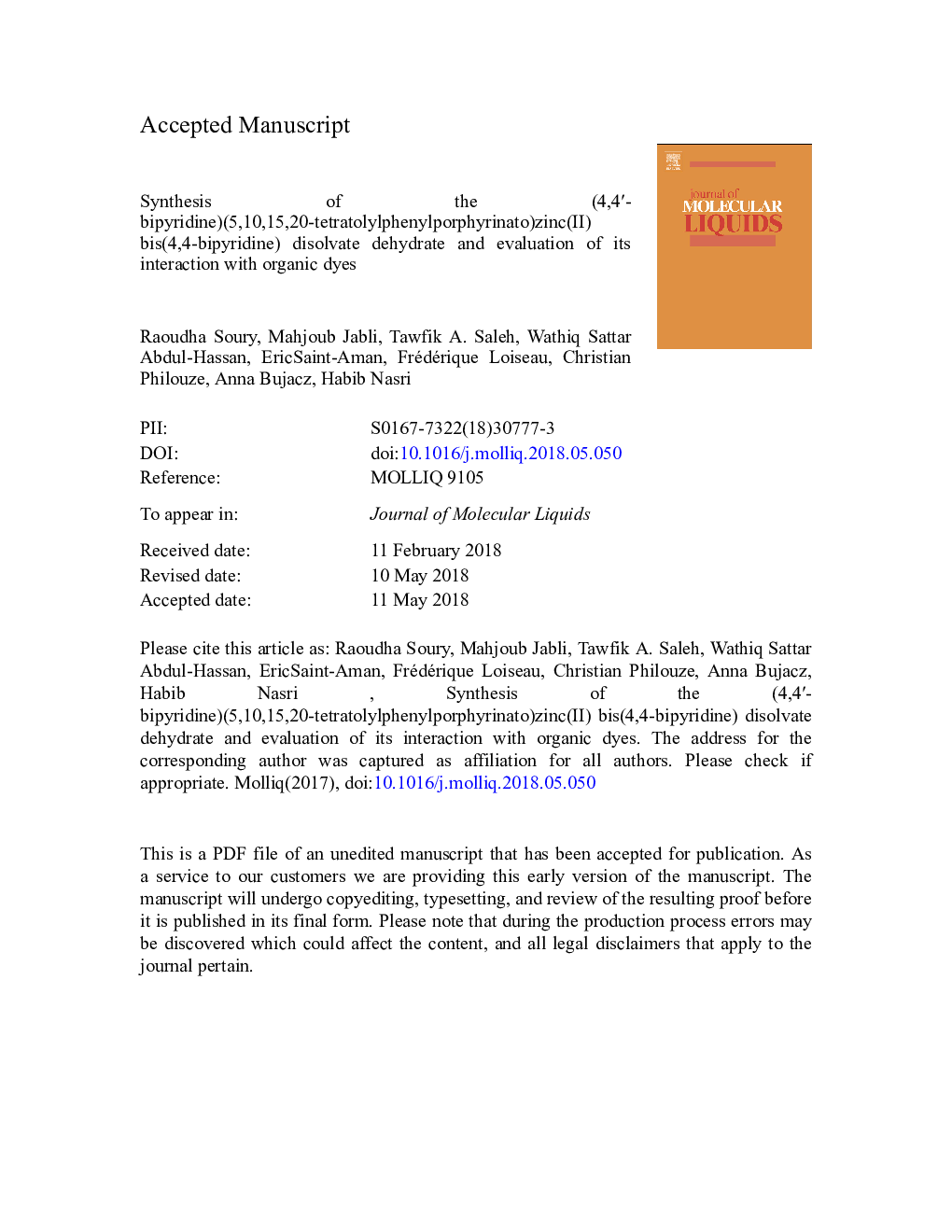| Article ID | Journal | Published Year | Pages | File Type |
|---|---|---|---|---|
| 7842056 | Journal of Molecular Liquids | 2018 | 24 Pages |
Abstract
The synthesis, photo-physical properties and the optical spectroscopy of the starting materials H2TTP (1), [Zn(TTP)](2) and [Zn(TTP)(4,4â²-bpy)]0.2(4,4â²-bpy.H2O) (3) (TTPâ¯=â¯meso-tetratolylporphyrin) are reported. The X-ray molecular structure of the compound shows that this species is a five-coordinated zinc(II) metalloporphyrin. Complex 3 crystallized in the monoclinic crystal system, space group C 2/c with aâ¯=â¯15.7541(2)â¯(Ã
), bâ¯=â¯18.6688(3)â¯(Ã
), câ¯=â¯21.6410(4)â¯(Ã
), βâ¯=â¯103.025(1)°, Vâ¯=â¯6201.08(17)â¯(Ã
3), dcalc, (g/cm3)â¯=â¯1.327 and Zâ¯=â¯4. Data gleaned from the optical spectroscopy reveals that the bathochromic shift of the Soret and Q absorption bands is connected mainly to the distortion of the 24-atom average plane of the porphyrinic macrocycle and the values of the optical gap Eg-op of the metallized species (2-3) are higher than that of the free base porphyrin H2TTP. The association constant (Kas) values of the zinc bpy-TTP derivative were also determined. Further, the interaction of the studied complexes with two organic dyes, namely Acid Blue 25 and Calmagite, was performed in an aqueous medium in batch mode. The results exhibited that the removal of Calmagite and Acid Blue 25 using complex 1 are 32% and 24%(C030 mg/L, pHâ¯6, T 25â¯Â°C). However, the target removal of these dyes using the system H2O2-complex 3 reached 46% and 35% (C0 30â¯mg/L, pHâ¯6, H2O2 concentration 4â¯mL/L, T 25â¯Â°C).
Keywords
Related Topics
Physical Sciences and Engineering
Chemistry
Physical and Theoretical Chemistry
Authors
Raoudha Soury, Mahjoub Jabli, Tawfik A. Saleh, Wathiq Sattar Abdul-Hassan, EricSaint-Aman EricSaint-Aman, Frédérique Loiseau, Christian Philouze, Anna Bujacz, Habib Nasri,
